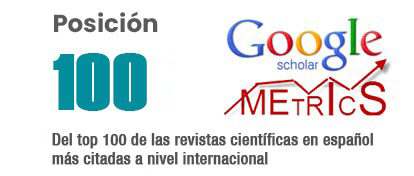Biological control of the black cob (Phytophthora Palmivora L.) In the crop of cocoa (Theobroma cacao L.)
DOI:
https://doi.org/10.62452/54qhgb79Keywords:
Cocoa, fungi, diseases, Trichoderma spAbstract
Cocoa (Theobroma cacao L.) is a tree of the Esterculiceae family of great importance in the economy of developing countries, due to its different uses and derivatives that are given to the fruit. The main factor for the loss of plantations and low production yields are caused by diseases: witches' broom (Moniliophthora perniciosa Stahel), moniliasis caused by (Moniliophthora roreri Cif & Par) and black ear rot (Phytophthora spp.). Due to this problem of not having an effective control for the eradication of the disease, our research aims to determine the best strategy for phytosanitary management in cocoa cultivation, in the area of the enclosure 3 de Noviembre, in the Balao canton. For the experiment, a completely randomized block design (DBCA) with 7 treatments and 3 repetitions was applied. The experimental area was distributed in plots of 50m2, each one is made up of different planting densities 800-1000-1200 plants/ha. For the dosing of the treatments, different biological products were combined: Trichoderma sp., Bacillus sp.; organic products such as (seaweed extract); resistance inducers such as (potassium phosphite) and a foliar fertilizer based on macro and micronutrients, the application of the treatments in the cocoa plantation was done for 5 months, according to the phenological stage of the plant. As results we found that T3 (Bacillus sp. + algae extract + potassium phosphite + foliar fertilizer) had the highest average of harvested kilos of cocoa at a density of 1200 plants/ha.
Downloads
References
Anzules, V., Borjas, R., Alvarado, L., Castro, V., & Julca, A. (2019). Control cultural, biológico y químico de Moniliophthora roreri y Phytophthora spp en Theobroma cacao ‘CCN-51’. Scientia Agropecuaria, 10(4), 511-520.
Anzules, V., Pazmiño, E., Alvarado, L., Borjas, R., Castro, V., & Julca, A. (2022). Control de enfermedades del cacao ( Theobroma cacao ) en Santo Domingo de los Tsachilas, Ecuador. Agronomía Mesoamericana, 33(1), 1-12.
Campaña, A., Hidalgo, F., & Sigcha, A. (2016). Cacao y campesinos: Experiencias de producción e investigación. SIPAE.
Koranteng, S., Awuah, R., & Kankam, F. (2020). Biological control of black pod disease of cocoa (Theobroma cacao L.) with Bacillus amyloliquefaciens,Aspergillus sp. and Penicillium sp. in vitro and in the field. Journal of Microbiology and Antimicrobials, 12(2), 52-63.
Martínez de la Parte, E., & Pérez, L. (2015). Incidencia de enfermedades fúngicas en plantaciones de cacao de las provincias orientales de Cuba. Rev. Protección Veg., 30(2), 87-96.
Moreno, C., Molina, I., Miranda, Z., Moreno, R., & Moreno, P. (2020). La cadena de valor de cacao en Ecuador: una propuesta de estrategias para coadyuvar a la sostenibilidad. Bioagro 32(3), 205-214.
Orozco, A., Cerna, E., Ochoa, Y., Landeros, J., Jasso, D., Medina, I., & Olalde, V. (2022). Efecto inhibitorio de nanotubos de carbono con extactos de Bacillus amyloliquefaciens sobre hongos fitopatógenos. Ecosistemas y Recursos Agropecuarios ,9(1), 1-9.
Pérez, E., Guzmán, R., Álvarez, C., Lares, M., Martínez, K., Suniaga, G., & Pavani, A. (2021). Cacao, cultura y patrimonio: un hábitat de aroma fino en Venezuela. RIVAR, 8(22), 146-162.
Pilaloa, W., Alvarado, A., Pérez , D., & Torres, S. (2021 ). Manejo agroecológico de la Moniliasis en el cultivo de cacao (Theobroma cacao) mediante la utilización de biofungicidas y podas fitosanitarias en el cantón La Troncal. ALFA. Revista de Investigación en Ciencias Agronómicas y Veterinarias, 5(15), 453-468.
Sánchez, V., Zambrano, J., & Iglesias, C. (2019). La Cadena de Valor del Cacao en América Latina y El Caribe. INIAP. https://repositorio.iniap.gob.ec/bitstream/41000/5382/1/Informe%20CACAO.pdf
Downloads
Published
Issue
Section
License
Copyright (c) 2022 Milton Aurelio Guamán Villa, Edwin Edison Jaramillo Aguilar, Jhon Fernando Bernal Morales (Autor/a)

This work is licensed under a Creative Commons Attribution-NonCommercial-ShareAlike 4.0 International License.
Authors who publish in Revista Metropolitana de Ciencias Aplicadas (REMCA), agree to the following terms:
1. Copyright
Authors retain unrestricted copyright to their work. Authors grant the journal the right of first publication. To this end, they assign the journal non-exclusive exploitation rights (reproduction, distribution, public communication, and transformation). Authors may enter into additional agreements for the non-exclusive distribution of the version of the work published in the journal, provided that acknowledgment of its initial publication in this journal is given.
© The authors.
2. License
The articles are published in the journal under the Creative Commons Attribution-NonCommercial-ShareAlike 4.0 International License (CC BY-NC-SA 4.0). The terms can be found at: https://creativecommons.org/licenses/by-nc-sa/4.0/deed.en
This license allows:
- Sharing: Copying and redistributing the material in any medium or format.
- Adapting: Remixing, transforming, and building upon the material.
Under the following terms:
- Attribution: You must give appropriate credit, provide a link to the license, and indicate if any changes were made. You may do this in any reasonable manner, but not in any way that suggests the licensor endorses or sponsors your use.
- NonCommercial: You may not use the material for commercial purposes.
- ShareAlike: If you remix, transform, or build upon the material, you must distribute your creation under the same license as the original work.
There are no additional restrictions. You may not apply legal terms or technological measures that legally restrict others from doing anything the license permits.




